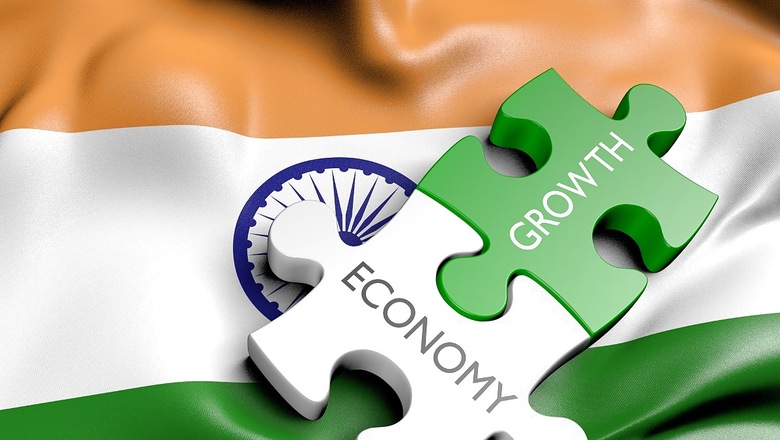
views
In one iconic episode of Yes, Minister, Sir Humphrey Appleby revealed the nature of bureaucratic criticism to Jim Hacker, saying, “The Opposition aren’t really opposing. They’re criticising, and it’s a much more subtle form of disapproval.”
This sentiment echoes the recent scenario involving a former Governor of the Reserve Bank of India. Known for his consistent criticism of the government, in one of the conversations with one of the Opposition leaders, he predicted that the country would be fortunate to achieve a 5 per cent growth rate next year. Much like Sir Humphrey’s description, this prediction seemed to be more about criticism for its own sake rather than being backed by substantive data.
However, the Ministry of Statistics and Programme Implementation (MoSPI) released data on May 31, 2024, that stands in stark contrast to this pessimistic outlook. According to their estimates, the Real GDP is expected to grow by an impressive 8.2% in FY 2023-24, up from the 7.0% growth rate in FY 2022-23. It is even more than expected 7.6%, according to the second advance estimates released in February 2024.
The Indian economy has demonstrated remarkable resilience and growth across various sectors in FY 2023-24 compared to FY 2022-23. The manufacturing sector saw a dramatic turnaround, jumping from a contraction of -2.2% to an impressive growth of 9.9%. Similarly, the mining and quarrying sector experienced a significant boost, growing from 1.9% to 7.1%. Electricity, gas, water supply, and other utility services saw growth from 7.5% to 9.4%, while construction maintained its strong growth at 9.9%.
The trade, hotels, transport, communication, and services related to the broadcasting sector slowed from 12.0% to 6.4%, yet still exhibited positive growth. However, there are some concerns, as this sector employs a significant portion of the workforce.
Financial, real estate, and professional services saw a slight decrease in growth from 9.1% to 8.4%, and public administration, defence, and other services experienced a modest decrease from 8.9% to 7.8%. Agriculture, livestock, forestry, and fishing growth decreased from 4.7% to 1.4%.
These figures show the resilience and robustness of the Indian economy, making it the fastest-growing economy in the world. An 8.2% growth rate was not anticipated by anyone, defying all pessimistic forecasts. This is precisely the kind of economic performance India needs to sustain over the next decade to ensure continued development and prosperity.
Apart from this, other key indicators also show significant improvements: rice production increased to 4.1%, coal production to 11.7%, and cement production to 9.1%. The production of crude oil rebounded to a positive 0.6%, and steel consumption rose to 13.6%. Telecommunications saw a substantial rise, with total telephone subscribers increasing by 2.3%. The automotive sector noted a 12.4% growth in private vehicle purchases. Trade activities expanded, with airport cargo handling skyrocketing to 7.0% and seaport cargo handling at 4.4%. Railways exhibited robust growth, with net tonne kilometres up by 1.1% and passenger kilometres by 11.0%.
Financial indicators showed strength, with aggregate bank deposits growing by 12.9% and credits by 16.3%. Despite a moderate 1.2% increase in revenue expenditure, less interest payments and subsidies, fiscal management remained stable. Exports grew by 3.2%, while imports slightly declined by 1.4%, indicating a shift towards domestic production. The industrial sector, as reflected by the Index of Industrial Production (IIP), showed growth in mining (7.5%), manufacturing (5.5%), and electricity (7.1%). The Consumer Price Index (CPI) moderated to 5.4%, indicating controlled inflation
The impressive growth figures can be attributed in part to policy continuity over the last decade. Economic theories emphasise the importance of consistent and stable policies for sustained economic growth. According to North (1990) in ‘Institutions, Institutional Change and Economic Performance’, institutions and the continuity of policies play a crucial role in shaping economic performance by providing a stable environment for economic activities. Furthermore, Acemoglu and Robinson in Why Nations Fail (2012) argue that inclusive economic institutions that remain consistent over time are critical for economic success as they create a predictable environment conducive to investment and innovation.
Policy continuity reduces uncertainty, vital for long-term investments and economic planning. The stability provided by consistent policies ensures that businesses and investors can make informed decisions without the fear of sudden regulatory changes. This is particularly important for emerging economies like India, where sustained high growth rates are essential for lifting millions out of poverty and achieving broad-based development.
Further, India’s demographic dividend presents a unique opportunity for accelerated economic growth, with a young and burgeoning workforce that can drive innovation, productivity, and economic expansion. However, significant investments in capital infrastructure, education, and healthcare are crucial to exploit this potential fully. These investments enhance the workforce’s productivity and create a robust foundation for sustained economic development. This would not happen if the capital expenditure were replaced by unproductive subsidies and freebies.
The importance of capital expenditure in driving economic growth is further underscored by empirical research. According to the paper ‘Fiscal Multipliers for India’ by Sukanya Bose and NR Bhanumurthy, the capital expenditure multiplier is 2.45, significantly higher than the multipliers for transfer payments and other revenue expenditures, which stand at 0.98 and 0.99, respectively. This strong multiplier effect highlights the need to prioritise capital expenditure over unproductive subsidies and freebies.
As the Modi government is set to resume its third term, we need to understand that the continuity of reforms and policies will propel India towards sustained growth and development.
Aditya Sinha is OSD, Research, Economic Advisory Council to the Prime Minister. His X handle is @adityasinha004. Views expressed in the above piece are personal and solely those of the author. They do not necessarily reflect News18’s views.




















Comments
0 comment